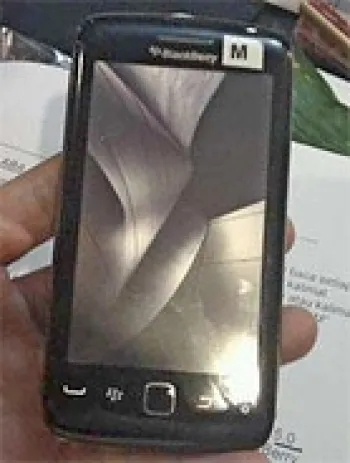Unveiling BlackBerry Playbook Specs Pricing Pros & Cons

Introduction to BlackBerry Playbook
The BlackBerry Playbook is a tablet computer launched by Research In Motion (RIM), designed to deliver a versatile entertainment and productivity experience. Released in April 2011 after its announcement in September 2010, the device was a bold entry by RIM into the competitive tablet market. It is powered by the BlackBerry Tablet OS, ensuring seamless access to essential BlackBerry services and a rich multimedia experience. Despite its discontinuation, the Playbook remains a significant piece of technology history due to its unique features and capabilities at the time of release.
Design and Build
The Playbook is crafted with precision, featuring dimensions of 194 x 130 x 10 mm and a weight of 425 grams. The design is sleek with a compact form factor, making it highly portable. The device does not support cellular connectivity but integrates various modern communication technologies, which was emblematic of BlackBerry's focus on smart, connected devices. It comes in a sophisticated black color, appealing to professional and personal users alike. The non-removable Li-Po 5300 mAh battery allows prolonged usage up to 10 hours of multimedia applications.
Display
The 7.0-inch TFT display boasts a resolution of 600 x 1024 pixels with a 16:9 aspect ratio, ensuring a vivid viewing experience. A screen-to-body ratio of approximately 54.7% and a pixel density of around 170 ppi provide clear image quality, while the nominal contrast ratio of 1160:1 enhances the clarity of images, videos, and applications.
Performance
Powered by the TI OMAP 4430 chipset, the Playbook ensures smooth performance for multitasking and gaming. The dual-core 1.0 GHz Cortex-A9 CPU and PowerVR SGX540 GPU are well-paired with 1GB of RAM, delivering efficient processing and graphic rendering. Although the device lacks an expandable memory card slot, it offers internal storage options of 16GB, 32GB, and 64GB, accommodating various user needs.
Camera Capabilities
The BlackBerry Playbook is equipped with a 5 MP rear camera and a 3 MP front-facing camera, both capable of recording 1080p videos at 30 frames per second. Although basic by today's standards, these features were competitive at the time, offering high-resolution video recording and still photography for capturing memorable moments and engaging in video calls.
Software and User Experience
Running on the BlackBerry Tablet OS, the Playbook offered a seamless and intuitive user experience. It featured support for Adobe Flash and HTML5, making it compatible with a wide range of online content. The presence of an accelerometer and gyroscope enhanced interactivity, allowing for more dynamic and responsive applications and games. However, some users found the limited app ecosystem a drawback, as it lacked some applications available on competing platforms.
Connectivity
Connectivity options on the Playbook include Wi-Fi 802.11 a/b/g/n, dual-band, Bluetooth 2.1 with EDR, and GPS for navigational purposes. Despite lacking a SIM slot and cellular connectivity, these functionalities provide ample connectivity options. The inclusion of a microUSB 2.0 port ensures easy file transfer and charging.
Sound and Multimedia
The Playbook features stereo speakers that provide a captivating audio experience. A 3.5mm audio jack is included, catering to private listening through headphones. The tablet's audio output was robust for its time, allowing users to enjoy music, movies, and game sounds effectively.
Market Impact and Legacy
Upon its release, the BlackBerry Playbook faced mixed reviews due to its innovative features and some missing elements like native email support, which was later rectified through software updates. Initially priced at approximately 120 EUR, it was positioned as an affordable alternative to other high-end tablets. Despite being discontinued, the Playbook represents BlackBerry's significant attempt to establish a presence in the tablet market, providing lessons for the tech giant's future endeavors in mobile technology.
Conclusion
While the BlackBerry Playbook may not have dominated the tablet market, it played a crucial role in RIM's strategy and reflected the innovation ethos of the company at that time. With solid build quality, distinct BlackBerry OS features, and competitive hardware for its era, it remains a noteworthy chapter in the history of mobile computing. The Playbook's legacy lives on as a reminder of the dynamic shifts in consumer expectations and technological advances in the digital age.
Key Features of BlackBerry Playbook
- Compact and portable design with dimensions of 194 x 130 x 10 mm
- Lightweight, weighing only 425 g
- 7.0-inch TFT display with a resolution of 600 x 1024 pixels
- Powered by BlackBerry Tablet OS
- Dual-core 1.0 GHz Cortex-A9 processor
- PowerVR SGX540 GPU for enhanced graphics
- Multiple internal storage options: 16GB, 32GB, 64GB with 1GB RAM
- 5 MP rear camera with autofocus and 1080p video recording
- 3 MP front camera also capable of 1080p video
- Dual stereo speakers and a 3.5mm audio jack
- Wi-Fi 802.11 a/b/g/n; supports dual-band
- Bluetooth 2.1 with EDR for wireless connectivity
- GPS navigation feature
- Innovative web browsing with HTML5 and Adobe Flash support
- Sensors include accelerometer and gyro for interactive functionalities
- Non-removable 5300 mAh Li-Po battery providing up to 10 hours of multimedia usage
- Highly competitive contrast ratio of 1160:1 for better display quality
- Available in classic Black color
BlackBerry Playbook Disadvantages
- No cellular connectivity; cannot be used for mobile data or calling.
- No support for 2G, GPRS, or EDGE networks.
- Device has been discontinued, meaning no official support or updates.
- No SIM card slot for cellular connectivity expansion.
- Uses a TFT display, which may result in lesser viewing angles and color reproduction compared to IPS or AMOLED displays.
- No expandable storage option; lacks a card slot.
- Lacks a built-in FM radio.
- Bluetooth version 2.1 is outdated compared to newer standards, impacting speed and connectivity range.
- No cellular GPS capabilities, reliant on Wi-Fi-based positioning.
- No removable battery, limiting user maintenance and replacement options.
- The device's weight may be considered heavy for a tablet of its size (425 g).













View Also
More Phones
All Rights Reserved +14266 Phones © Mobilawy 2025

























